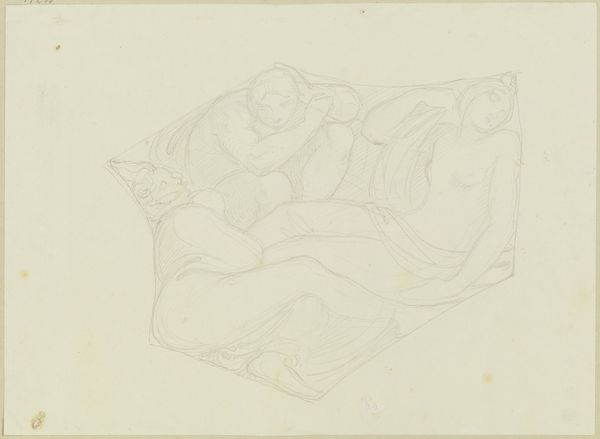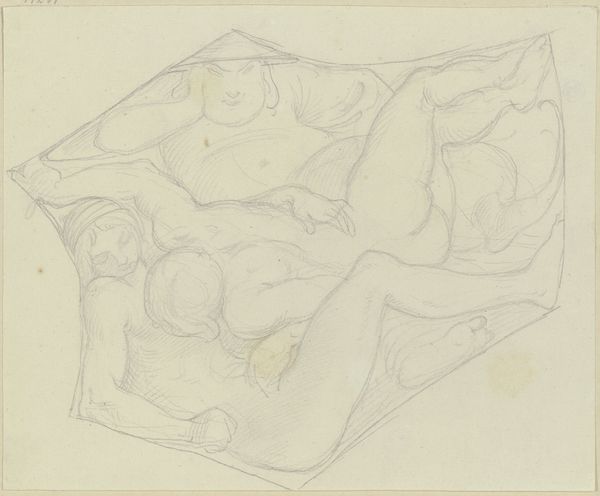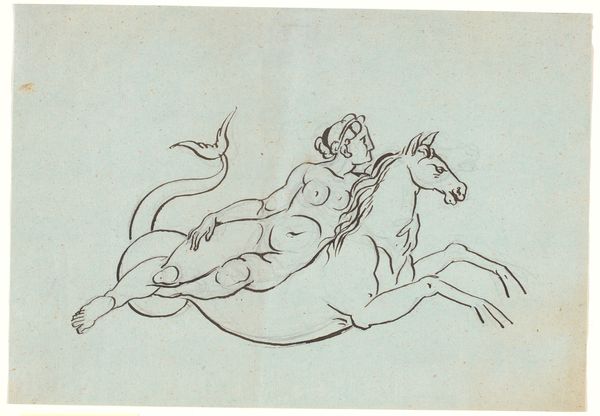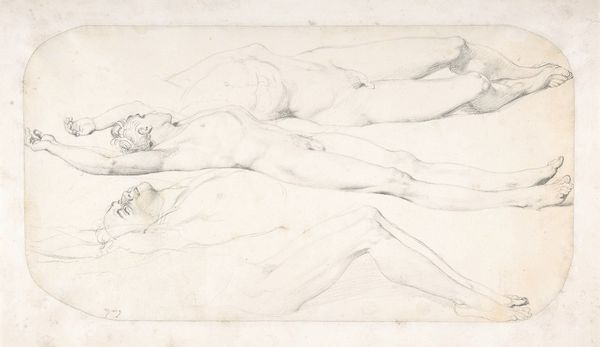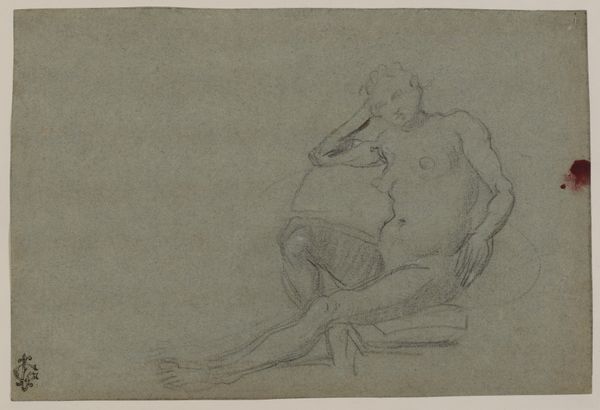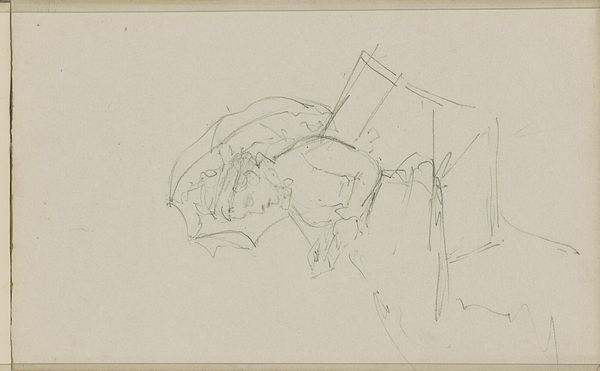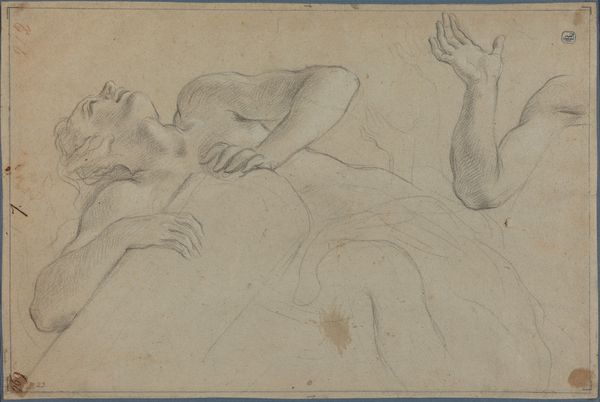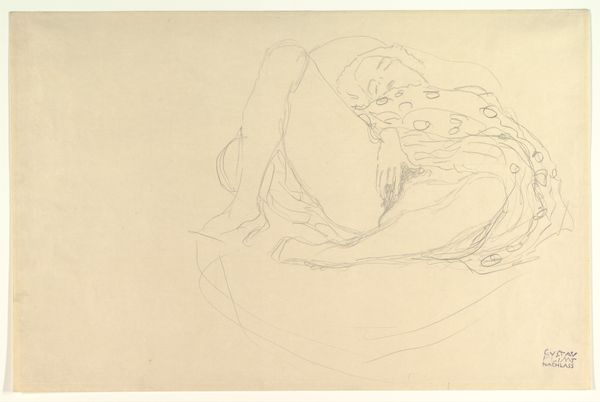
drawing, pencil
#
drawing
#
amateur sketch
#
light pencil work
#
pencil sketch
#
incomplete sketchy
#
figuration
#
personal sketchbook
#
idea generation sketch
#
ink drawing experimentation
#
pen-ink sketch
#
pencil
#
sketchbook drawing
#
genre-painting
#
academic-art
#
nude
#
sketchbook art
Dimensions: height 225 mm, width 295 mm
Copyright: Rijks Museum: Open Domain
Curator: Here we have a drawing titled "Twee naakte mannen in zwaardgevecht," or "Two Naked Men in Sword Fight," created by Willem Cornelis Rip in 1874. It's rendered in pencil, giving it a somewhat tentative, exploratory feel. Editor: My immediate impression is of vulnerability. The nakedness contrasts starkly with the aggression implied by the sword fight, and the lightness of the pencil work makes it all seem very fragile. Curator: Precisely. The piece likely stems from academic art traditions where the male nude was studied extensively, connecting it to classical ideals of heroism and strength. However, by presenting the figures in the midst of conflict, it also complicates this established imagery. We might see these figures as challenging traditional expectations of masculinity. What kind of dialogue are the subjects having with their culture through the act of engaging in sword fighting? Editor: Well, considering the choice of depicting them nude with swords, one can also see layers of symbolism around purity and battle. In mythology, swords can symbolize justice, power, even sacrifice. Here, stripped bare, the figures and the weapons invite the audience to consider the base and timeless struggle that the artist is considering. I wonder about the social context. Is there a sense that the artist sees inherent conflicts as elemental to men in society? Curator: Absolutely. The artistic academies in the 19th century wrestled with social evolutions, especially with changing concepts of gender. What happens to men as political actors if cultural conditions expect specific displays of the ideal self? Editor: The drawing style reinforces this sense of conflict. It feels unfinished, uncertain, as if the artist is still grappling with what he wants to convey. The quick strokes lend it the character of an impulsive act, a fleeting sketch. Curator: It's a powerful testament to how artistic endeavors can intersect with societal discourse. Editor: Yes, art as an emotional and cultural lens through which to view ourselves, reflecting those symbols and what they communicate back to the world.
Comments
No comments
Be the first to comment and join the conversation on the ultimate creative platform.

